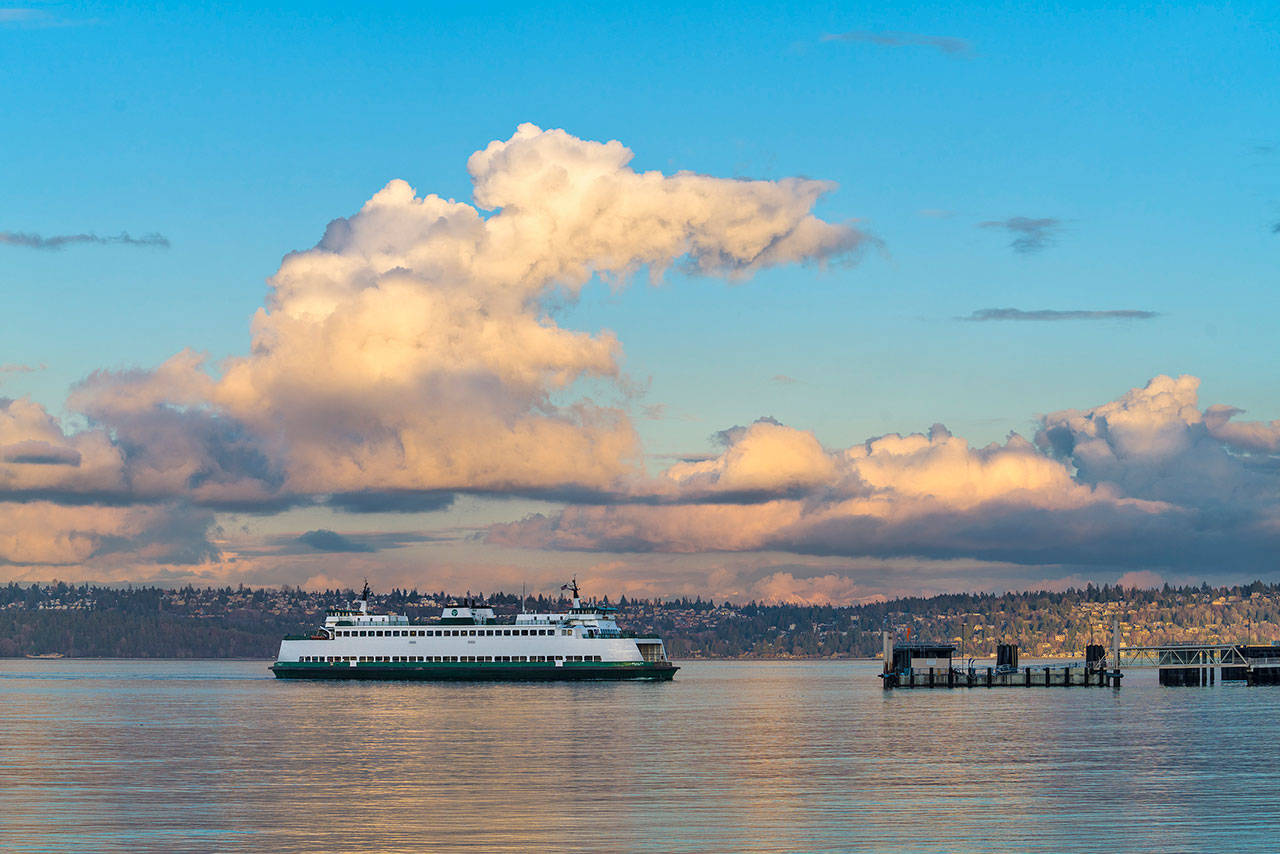By Bruce Haulman and Terry Donnelly
For The Beachcomber
The Washington State Ferry System was created 70 years ago on June 1, 1951.
Originally intended as a temporary system to run until a series of up to five proposed cross-Sound bridges were constructed, the ferry system operates the largest fleet of ferries in the United States with 21 ferries that carry 24 million passengers each year to 20 different ferry terminals.
Of course, the bridges were never built, which is a story in its own right. But on this 70th anniversary of the formation of the Washington State Ferry System, it is worth remembering the key role Vashon played in forming the system and leading the way toward creating a publicly-owned system of ferries that are essentially a continuation of the State highway system.
In 1945, the ferries serving Vashon were privately owned by The Black Ball Line, a monopoly under the control of Captain Alexander Peabody who owned a house on the island at Ellisport. By 1947, the ferries serving Vashon were publicly owned by the Vashon Ferry District, and by 1951 they were publicly owned by the State of Washington.
Calls for a state ferry system began during the ferry strikes of the 1930s, but a ferry strike and ten-percent fare increase in March 1947 fanned the public’s desire for a state takeover. A bill had passed in the 1947 legislative session that allowed counties to organize special ferry districts. The March 1947 shutdown and fare increase led islanders to set up a special election for that September. King County Ferry District No. 1 (Vashon Ferry District) was approved 316 to 38; George McCormick, Charles Law and George Wall were elected its commissioners, and they put together a ferry system from scratch.
The new Vashon Ferry District negotiated to rent the Fauntleroy Dock and purchased the thirty-four-car ferry City of Tacoma, and King County made the forty-five-car ferry Lincoln available. On March 1, 1948, two-ferry service between Vashon and Fauntleroy began. The South End had passenger-only service on the Gallant Lady and the Else III until car ferry service began on May 1, when commissioners obtained the Kitsap. The Vashon Ferry District was up and running.
But all was not assured. In March 1948, Peabody and King County agreed to allow Black Ball–run service between Fauntleroy and Harper (Southworth), while the Vashon Ferry District ferries would serve the Fauntleroy/Vashon run. This set the stage for one of the more memorable events in Vashon’s history: the emergence of the Vashon Vigilantes.
Captain Peabody announced that he would run his ferry Illahee from Vashon to Fauntleroy, starting on May 15, 1948. The Vashon commissioners were advised that if the Illahee landed at Vashon, Peabody would have the right to continue service to the island. When they decided to keep it from landing, the Vashon Vigilantes were born.
George McCormick, who owned Vashon Hardware, opened his doors so Vigilantes could get ax handles or other long tools to keep the Illahee from docking. The Vigilantes waited with two sheriff’s deputies at the north dock, well supplied with coffee and doughnuts to keep their courage up. When the Illahee got near enough, the Vigilantes stuck out their long-handled tools and shoved them away. The ferry attempted to land again and was again pushed back. After a few tense moments, the Illahee retreated to loud cheers. Peabody never again tried to restart the service to Vashon.
The Vashon Ferry District found that it had all the problems the Black Ball ferries had. The commissioners were constantly dealing with getting boats that met Coast Guard standards. The decrepit Lincoln was in constant danger of losing its certification. When the City of Tacoma lost its certificate, the Skansonia was quickly added to the North End route.
Rates were low, but commissioners announced that they needed a 20 percent increase in traffic to keep a two-boat schedule. Storms sank the Tahlequah slip in February 1949, then again in January 1950, and in early 1951, storms forced the ferries to briefly shut down. But the challenges were lightened by popular support.
In September 1948, Mrs. James Betts designed a Ferry District flag: white with a green pine tree in the center and a white map of Vashon within the tree. New leaders came forward: Leo Long replaced commissioner Charles Law, who resigned in December 1948, and Paul Billingsley became a commissioner in June 1949. In a February 1950 ferry meeting attended by 750 islanders, the commissioners received a unanimous vote of confidence. Vashon was not going to let Captain Peabody and his Black Ball fleet return.
After the Vashon Vigilantes incident, the State of Washington once again offered to purchase the Black Ball Line, but Peabody refused. In September, the state increased its offer, and Peabody and his stockholders agreed to sell. They were taken to court, and the Washington State Supreme Court ruled the purchase illegal under state law.
Governor Wallgren lost to former governor Arthur Langlie in that fall’s election, in part due to the ferry mess. Langlie got the legislature to change the law so the purchase would be legal, and on December 30, 1949, the state announced its purchase of the Black Ball Line and The Washington State Ferry System was born.
One year later, on June 1, 1951, the Vashon Ferry District turned its fleet over to the new State Ferry System, and the Sportsmen’s Club threw a thank-you party to let commissioners and personnel take a bow.
As we either celebrate or bemoan the 70th Anniversary of the Washington State Ferry System, it is worth remembering the key role Vashon islanders played in ending the Black Ball monopoly and in creating a model for the new Washington State Ferry System.
— Bruce Haulman is an island historian. Terry Donnelly is an island photographer.


